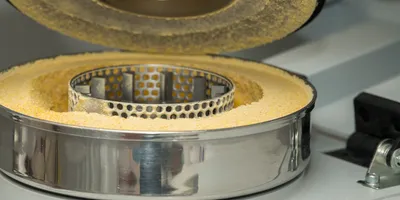Laboratory milling and grinding processes are essential for sample preparation across many scientific fields, including materials science, environmental analysis, and pharmaceutical research. However, these processes involve hazards such as airborne dust, sample contamination, and physical injury. Following proper safety protocols is crucial to protecting laboratory personnel and ensuring accurate results.
Personal Protective Equipment (PPE) for Safe Milling and Grinding
The first and most important safety measure is wearing appropriate personal protective equipment (PPE). Safety glasses or goggles are mandatory whenever operating a mill or grinder to protect the eyes from dust, sample particles, and potential debris ejected during the grinding process. In some cases, especially with highly friable or hazardous samples, additional face shields, gloves, and lab coats may be recommended.
Proper Sample Preparation and Cleaning
Before introducing any sample into a mill or grinder, thoroughly clean the equipment to prevent cross-contamination. Residual particles from previous samples can affect the integrity of your results, particularly in analytical laboratories where trace analysis is being conducted. Use appropriate cleaning solutions and procedures specified by the equipment manufacturer to ensure all surfaces, grinding elements, and collection chambers are contamination-free.
Managing Dust and Airborne Particles
Many milling and grinding processes generate fine dust, which can pose respiratory hazards and contaminate the work environment. Depending on the sample type, installing a local ventilation system or operating the equipment within a fume hood may be necessary to capture and remove airborne particles. In environments where hazardous materials are milled, such as asbestos or heavy metal samples, HEPA filtration systems should be used to ensure safe air quality.
Safe Operation Techniques
Hands-Free Sample Processing
Never place your hands, fingers, or any body parts near moving grinding blades, rotors, or milling discs. Modern mills and grinders are often equipped with safety interlocks to prevent operation when the lid or chamber is open, but operators should still exercise caution.
Follow Manufacturer Guidelines
Always follow the manufacturer’s operating instructions and recommended maintenance schedules. Different types of mills, including ball mills, disc mills, and rotor mills, have unique operating procedures designed to maximize performance and minimize risk.
Monitor Sample Properties
Some samples, particularly those with volatile components, can become hazardous under the heat and friction generated during milling. Be aware of your sample's properties and consider alternate preparation techniques if excessive heating or chemical reactions are likely.
Importance of Regular Equipment Maintenance
Routine maintenance is critical for ensuring safe and efficient operation. Regularly inspect the grinding elements, seals, and safety interlocks for signs of wear or malfunction. Replace worn components promptly to avoid unexpected failures that could pose safety risks.
Emergency Preparedness
All laboratory personnel should be familiar with the emergency stop procedures for each milling and grinding device. Emergency stops allow operators to quickly halt equipment operation in the event of a malfunction or accident.
Additionally, laboratories should have spill response kits available when working with hazardous or reactive samples, and first aid kits should be stocked and easily accessible in case of injury.
Final Thoughts
Milling and grinding are essential processes in many laboratories, but they present significant safety challenges. By following proper PPE guidelines, maintaining clean equipment, ensuring adequate ventilation, and adhering to safe operating practices, laboratories can minimize risk and create a safer working environment for all personnel.
Frequently Asked Questions (FAQ)
1. Why is eye protection necessary when using a mill or grinder?
Eye protection shields against flying debris, dust, and sample particles that could cause eye injuries during milling or grinding operations.
Lab Quality Management Certificate
The Lab Quality Management certificate is more than training—it’s a professional advantage.
Gain critical skills and IACET-approved CEUs that make a measurable difference.
2. How can I prevent sample contamination when using a mill?
Thoroughly clean the equipment between samples and ensure that all grinding surfaces are free of residual particles to prevent cross-contamination.
3. What is the role of ventilation during milling and grinding?
Ventilation systems help capture airborne dust and remove hazardous particles from the laboratory air, protecting both personnel and equipment.
4. What maintenance should be performed on laboratory mills and grinders?
Routine maintenance includes cleaning grinding elements, inspecting seals and interlocks, and replacing worn parts to ensure safe, reliable operation.
This content includes text that has been generated with the assistance of AI. Lab Manager’s AI policy can be found here.













